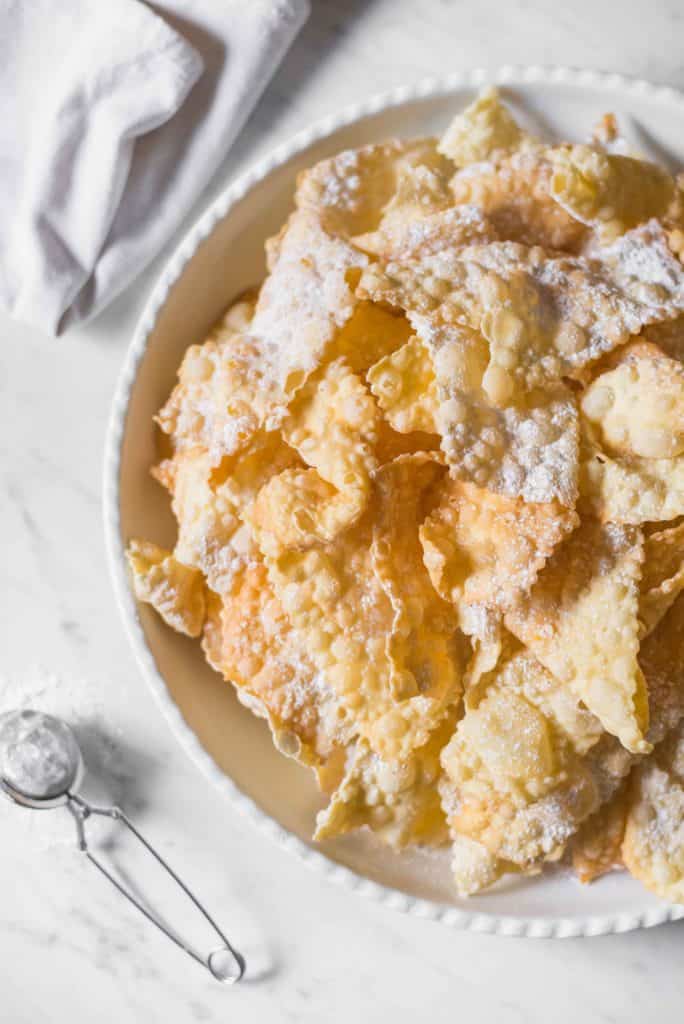
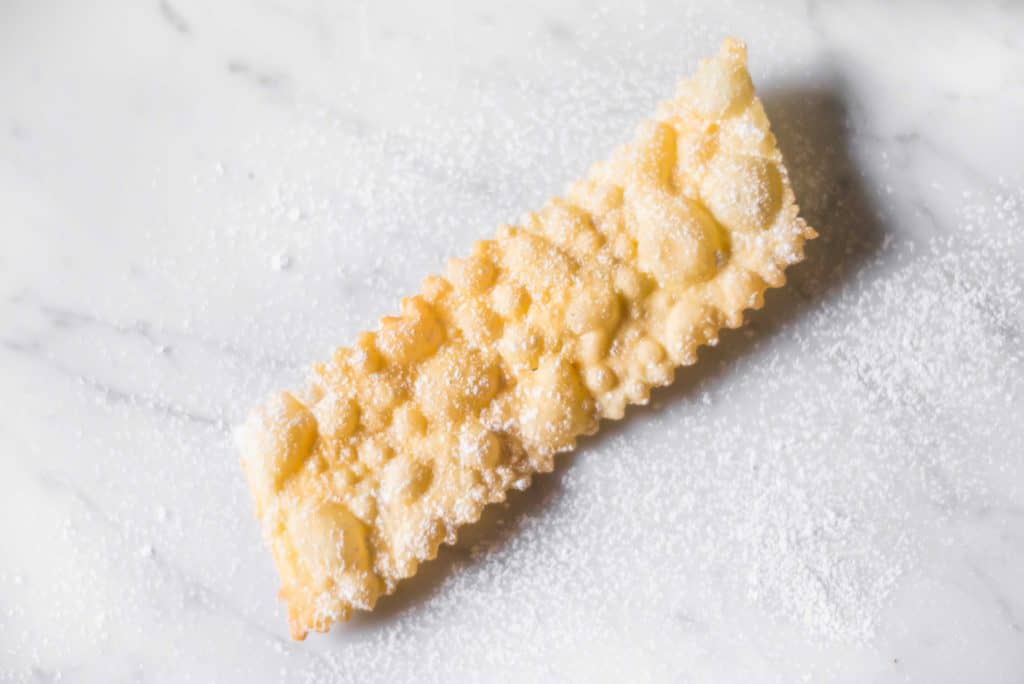
Carnevale is the period falling right before Lent when Italians indulge in rich foods, silly costumes, and pranks. Kids (and sometimes adults) dress up for Carnevale and even go to school and local parades, all dressed up. I was an adorable Pierrot at age 3 and a cute gypsy at 4. Then there’s no other photographic evidence of my Carnevale outfits…until I was about 10. That’s when I wore my unforgettable (cringe!) 1800s-style Principessa Primavera dress. I looked like a pink cloud, covered in tulle and frills, with a silly hoop at the bottom of the skirt, bouncing back and forth as I moved anywhere. The best part of the costume? The wide-brim hat covered in pink tulle, leaving my poofy bangs intact. In the picture I looked all cheerful, right next to my cousin wearing the same exact dress (yikes!).
As I grew older, my interest shifted from wearing costumes and throwing confetti in the air, to savoring delicious Carnevale treats, i.e., frittelle, castagnole, and crostoli. My mom usually makes one batch of each and they all disappear pretty quickly. Crostoli are the treat that goes the quickest, as they are utterly and sneakingly addictive!
For us, making crostoli is a family affair. Since it happens once a year, everybody is happy to help! Plus, additional manpower is always needed because it can easily turn into an assembly line: roll, cut, fry, dust, repeat. The final outcomes are:
1) a big stash of sugary crostoli that’s promptly dispatched to the rest of the family (and neighbors)
2) pretty much EVERYTHING — you and every room of the house — smelling like fried food.
…But, as usual, it’s totally worth it.
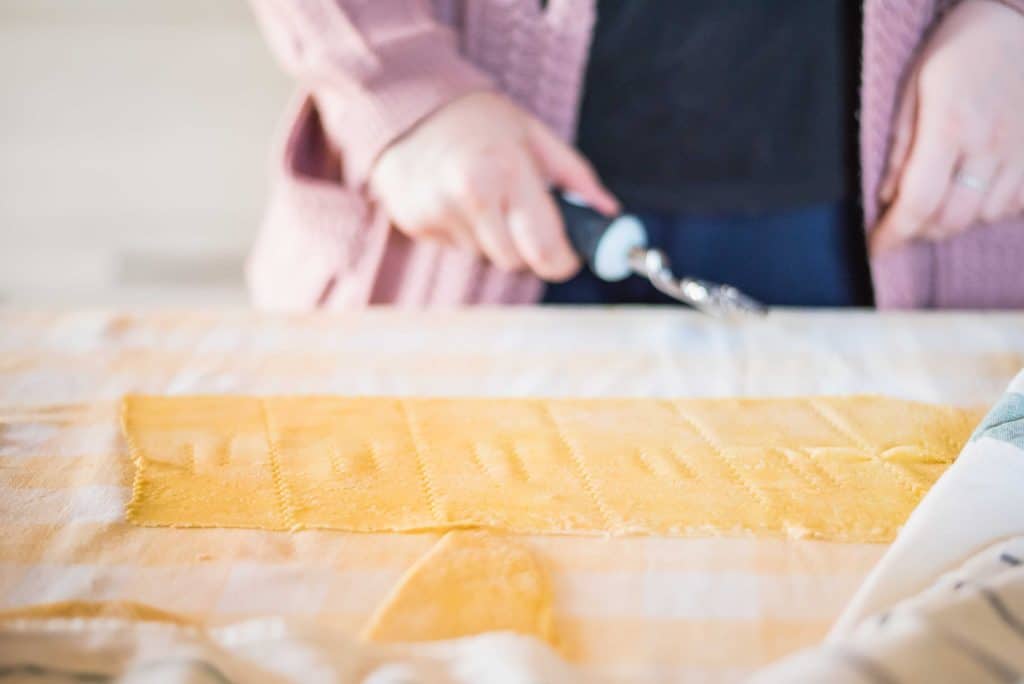
WHAT YOU NEED TO KNOW ABOUT CROSTOLI
Made simply of eggs, flour, butter, and sugar, crostoli are perfectly crisp and delicate sheets of fried dough, dusted in powdered sugar. Their popularity is proven by the variety of names they carry throughout Italy: frappe, bugie, chiacchere, galani, lasagne, cenci, lattughe, sfrappole — just to name a few! Here in Friuli (and in Veneto and Trentino Alto Adige), we call them…you got it, “crostoli”!
Crostoli are known to be finicky. The weather, the type of flour, how thin you roll the dough, the oil temperature, the moon –just kidding –…they all can sabotage your efforts. But don’t worry! I have the perfect recipe for you: I combined my mom’s recipe with another popular recipe by pastry chef Iginio Massari, and I tested it a couple of times. Also, I wrote down a few tips to help you reach that perfect airy, crispy, delicate, and full-of-bubbles texture.
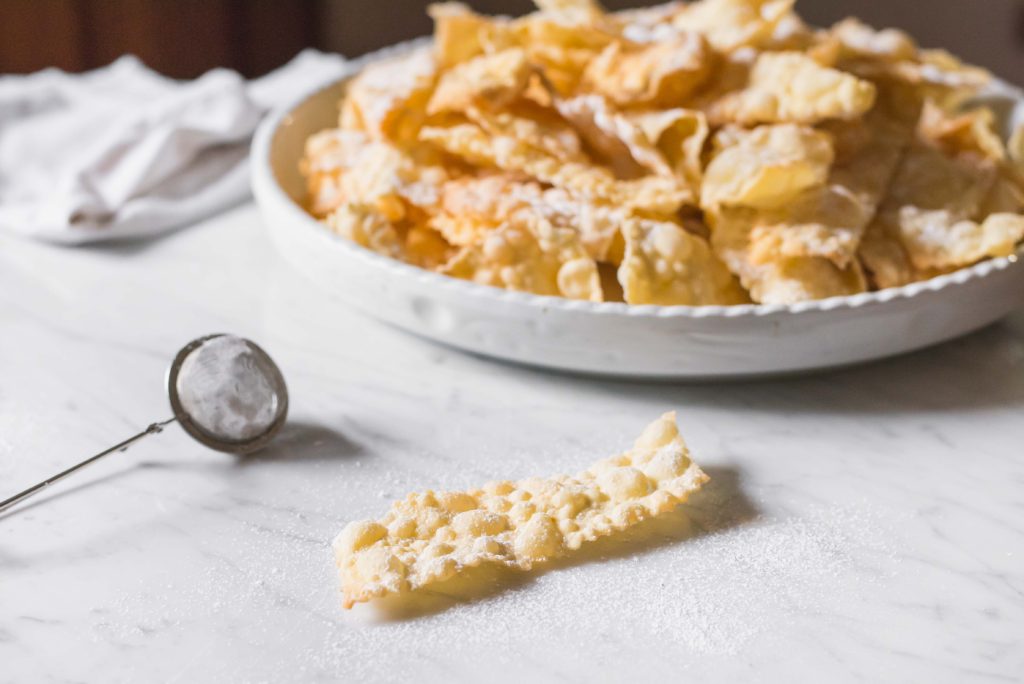
TIPS FOR AWESOME CROSTOLI
- HELP: If possible, get another person to help you. While one rolls the dough and cuts it, the other one fries it (it’s also possible to do it all on your own, if you work in small batches).
- DOUGH: Roll out your dough into a paper-thin, almost see-through sheet, using a pasta machine. Start from the widest settings, and work your way to the thinnest (I usually go from 3, to 5, to 7). Always cover the rolled dough waiting to be fried, so it doesn’t become dry.
- ALCOHOL: Do not skip the alcohol, as it works as a leavening agent and it also helps to add more flavor. We used a plum grappa we had in the cabinet, but you could definitely use Marsala, brandy, or rum.
- DEEP-FRYING: Use peanut oil for crispier and lighter results. Start deep-frying only when the oil reaches the ideal temperature ( 175°C/ 345°F). Don’t overcrowd the frying pan: fry only 3-4 crostoli at a time.
Before leaving you to the recipe, let me share with you my very own way to measure “crostoli success”: if you make a big mess when you bite into it, you pretty much nailed it! The more crumbs (and powdered sugar), the better. 🙂
If you tried this recipe, please share your photos and tag me with #veryeatalian! Also, don’t forget to try more Carnevale treats, like my Castagnole and Frittelle!
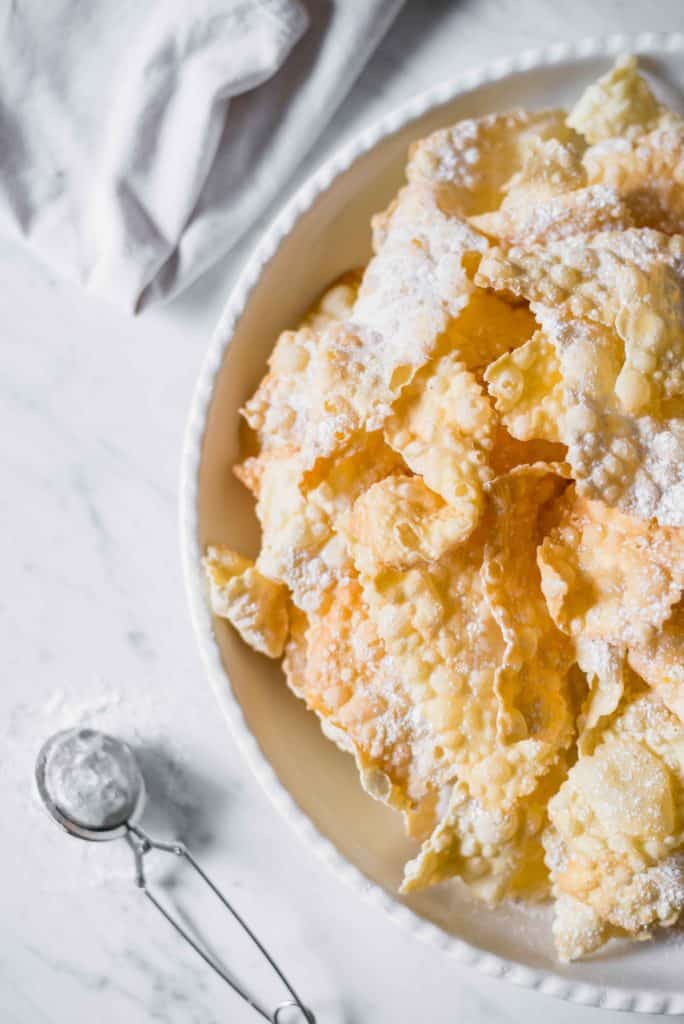

Crostoli: a perfectly crisp Carnevale treat
Made simply of eggs, flour, butter, and sugar, crostoli are perfectly crisp and delicate sheets of fried dough, dusted in powdered sugar. For this recipe, I combined two recipes of two great chefs: pastry chef Iginio Massari and my mom : )
Ingredients
- 400 g bread flour sifted
- 100 g pastry flour sifted
- 60 g granulated sugar
- 1 orange zested
- 4 g salt
- 4 eggs lightly beaten
- 60 g butter melted
- 50 g plum grappa (can sub with Marsala, rum, or brandy)
- peanut oil for frying
- powdered sugar for dusting
Instructions
-
CROSTOLI DOUGH: In a medium-sized bowl, combine both types of flours, sugar, salt, and orange zest. Using a fork, whisk in the lightly beaten eggs with rest of the dry ingredients. While whisking, gradually add the melted butter and the grappa (or your liqueur of choice). Transfer your dough onto a clean work surface and start kneading until you obtain a smooth ball. For better results, beat the heck out your dough ball with a rolling pin a few times (10, 20?). Wrap the dough ball in plastic film and let it rest for 1 hour at room temperature.
-
ROLL & CUT: Divide the dough into 8 smaller portions and keep the unused portions covered with a kitchen towel.
Roll: Using a pasta machine, roll out one portion, dusting it with flour at every passage. Starting from a wide setting, feed the dough through the pasta machine 2-3 times, folding the dough to obtain an even rectangle. Work your way to a very thin setting (I usually go from 3, to 5, to 7).
Cut: Cut the thin sheet of rolled dough into rectangles, about 6-7 cm (2.5-3 inches) wide. Cut a slit lengthways along the center of each rectangle (this will help avoid big bubbles during frying).
Cover: Cover the rolled dough with a kitchen towel so it doesn’t dry out. If you don’t have anybody helping you, proceed to frying as the rolled dough shouldn’t rest too long. You’ll then repeat the whole process, working in batches.
-
DEEP-FRY: Pour about 5 cm/ 2 inches of peanut oil in a medium-sized saucepan and set it over medium heat. When the oil temperature registers 175 C/ 345 F, start frying your crostoli (3–4 at a time). When they are light gold and crisp, drain them with a slotted spoon and transfer them to a tray lined with paper towel. Dust with powdered sugar. Repeat with the the rest of the dough, working in batches, and reheating oil in between.
Crostoli are best enjoyed within the first 2-3 days. Keep them covered with a paper towel so they stay fragrant and crispy.
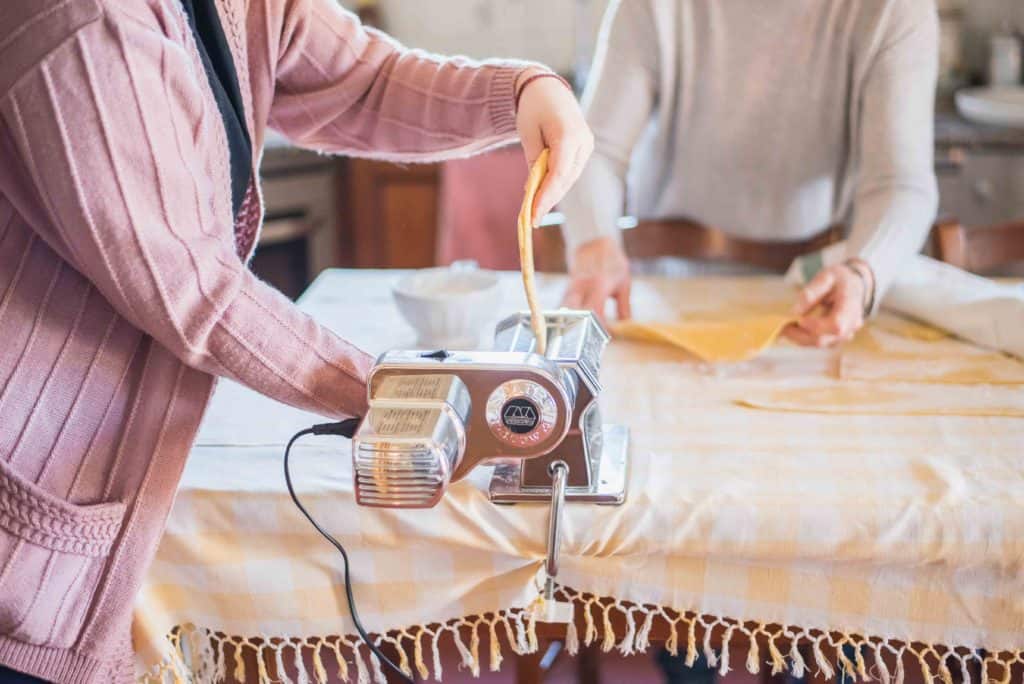
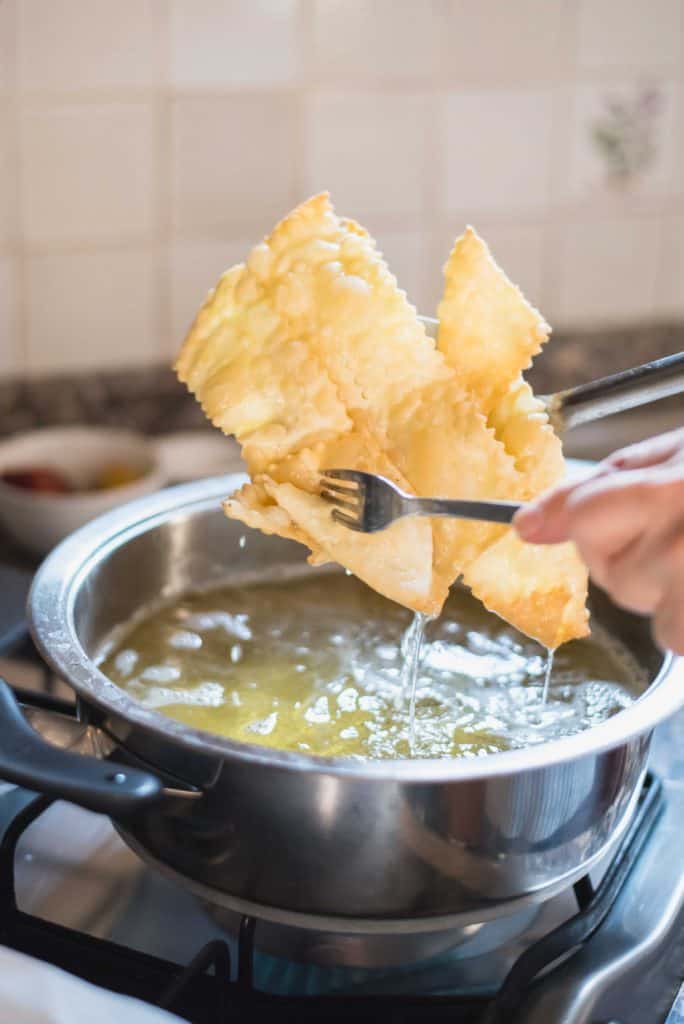
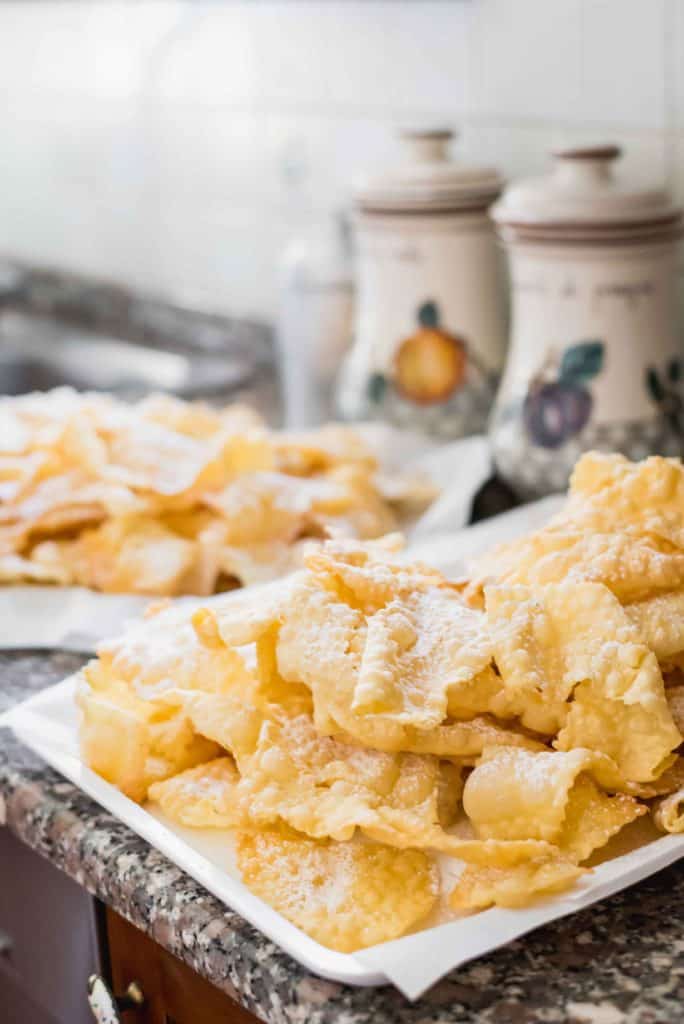
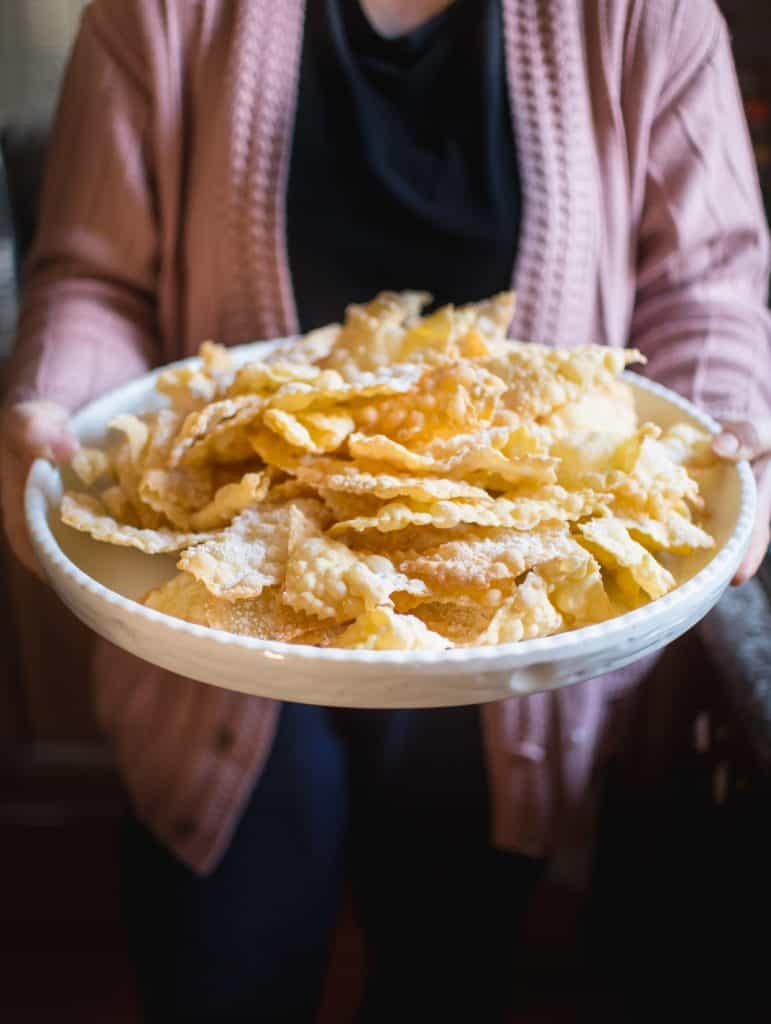



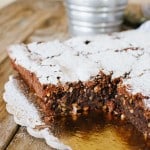


Leave a Reply